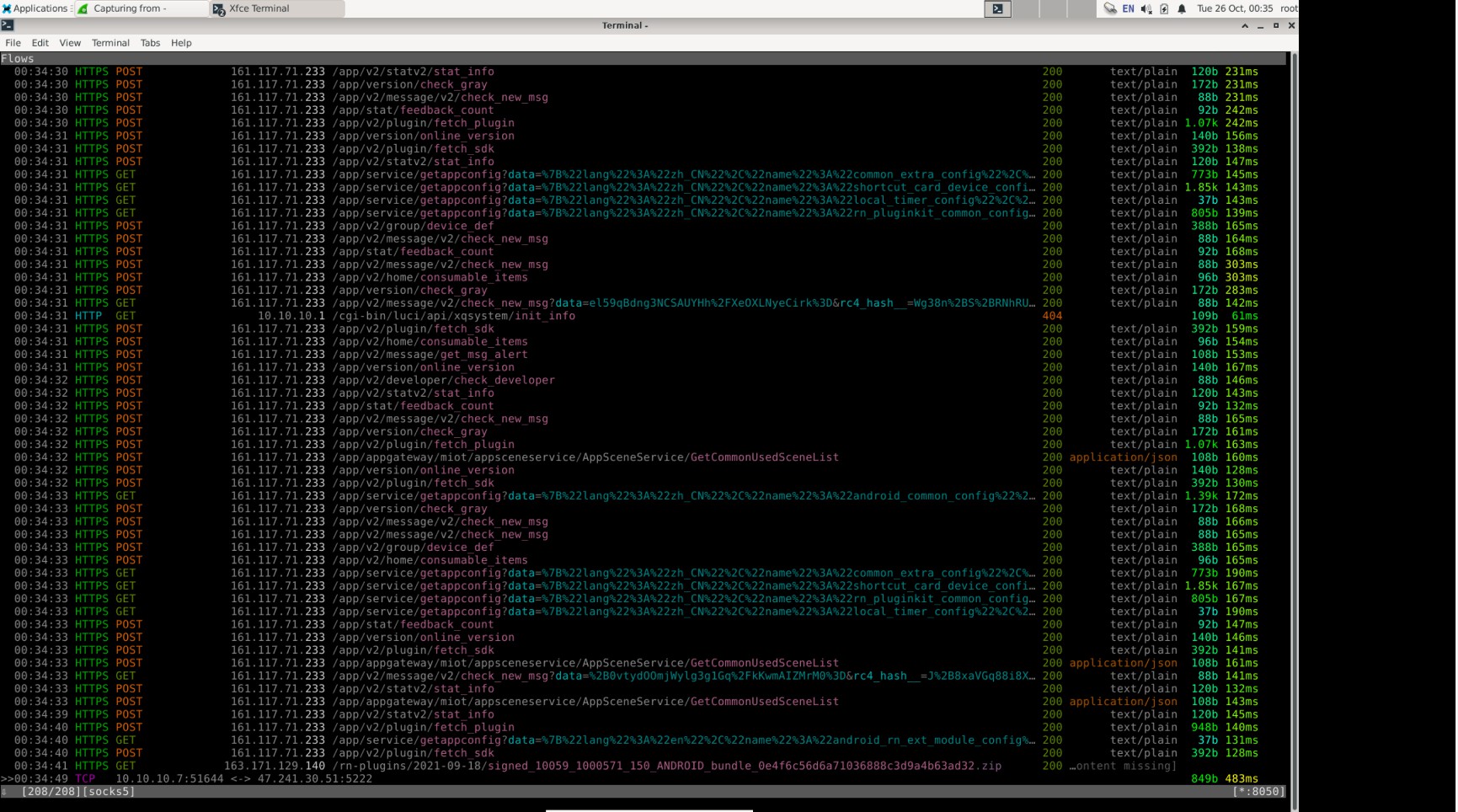In order to capture the network activity during the process of pairing the Roborock - I needed to also log the network activity from my Android phone that was running Xiaomi Home.
I ended up using PCAPdroid, which allowed me to target a specific app (or just everything) to capture network activity from.


As expected, I was bound to run into roadblocks; such as being unable to read the contents of HTTPS data, however the PCAPdroid app suggested setting up a SOCKS5 MITM proxy like mitmproxy to decrypt the SSL content!

I set up a Debian virtual machine (in hindsight I should have set up Ubuntu or something with more things preinstalled haha!) with mitmproxy - and after some NAT/port-forwarding/bridged networking magic I was able to successfully read the HTTPS data that was communicated from the Xiaomi Home application.
Although, some of the data is encrypted as part of the the application protocol; so whilst I was able to remove the SSL/TLS encryption, there was still another layer of encryption that needed to be removed - save that for next time!
Non-HTTPS data could also be logged in PCAPdroid; either locally, or sent to a logging endpoint via UDP. I set that up and was able to view other packets with Wireshark.
Hopefully the combination of these two techniques will allow me to gain a decent insight into the network activity of the app
Hiccups
I seemed to run into some issues when accessing other local devices.
This is likely due to how PCAPdroid acts as a VPN (to allow root-less functionality) - The VPN creates an internal network with PCAPdroid acting as a gateway. However this means that the device now has an internal IP address - which might screw up the communication to other local networked devices.